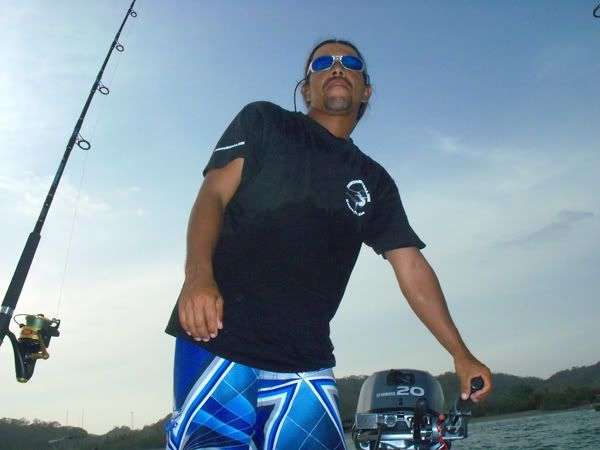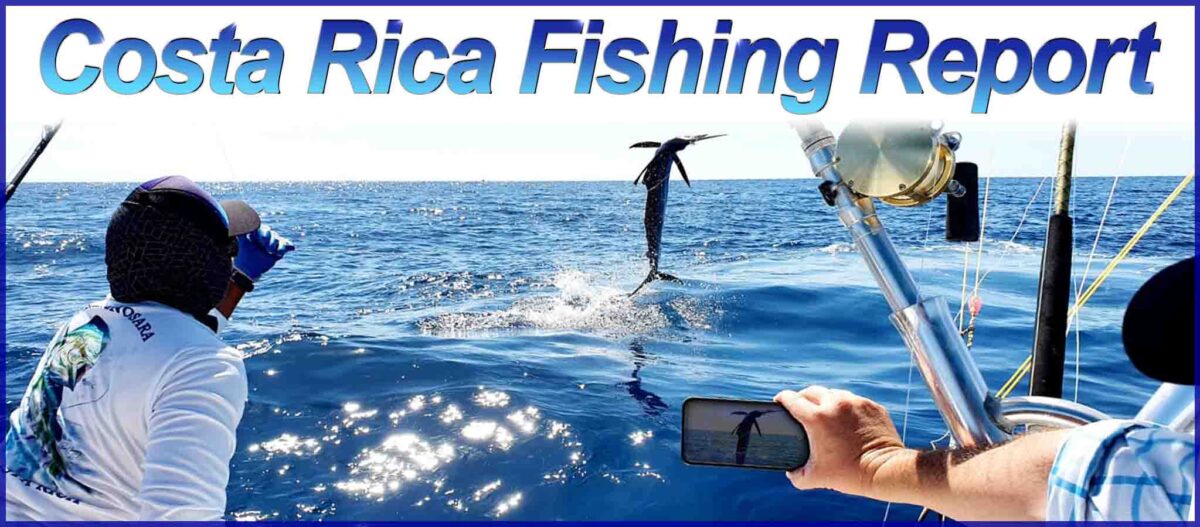“Dear God, Be good to me; thy sea is so great and my boat is so small.”
-Prayer of the Brenton Fisherman
The Adventurer fills a very important role for the FishingNosara fleet; a boat that is small and light enough to host 3 or less anglers while still delivering the world-class level of fishing that our clients have come to expect.
This feisty panga provides a cost-effective means to harvest inshore reef dwellers via trolling, top-water casting, deep jigging, and even on the fly. Don’t even get me started on the Lobster tours we have planned…
The construction and rigging of the Adventurer unfolded over a four month span, and as always began with Craig Sutton putting his imagination on a series of pencil sketch diagrams.
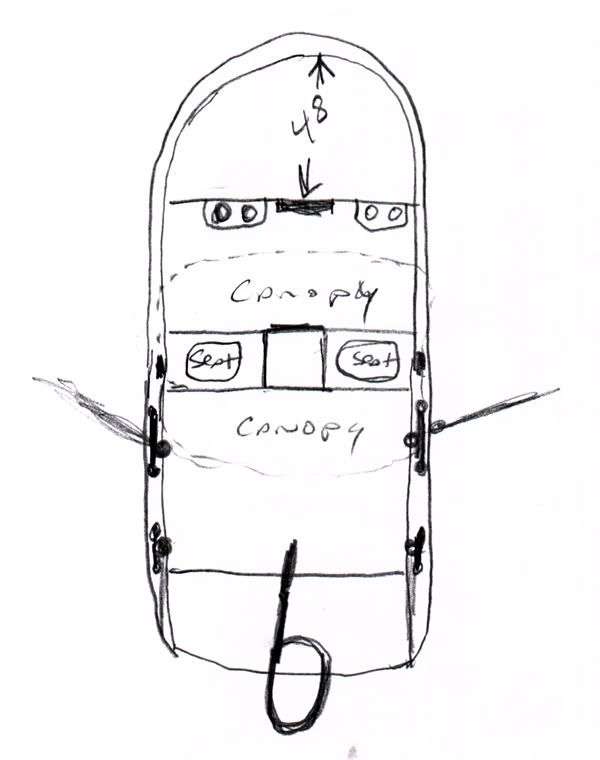
With the general layout in mind, we called upon NBC Boatworks and got our chunk of fiberglass into the mold.
We are thrilled with the overall performance and craftsmanship of the 26’ Super Panga Explorer, so it was a no-brainer to tap NBC Boatworks to mold up the 23’ Adventurer.
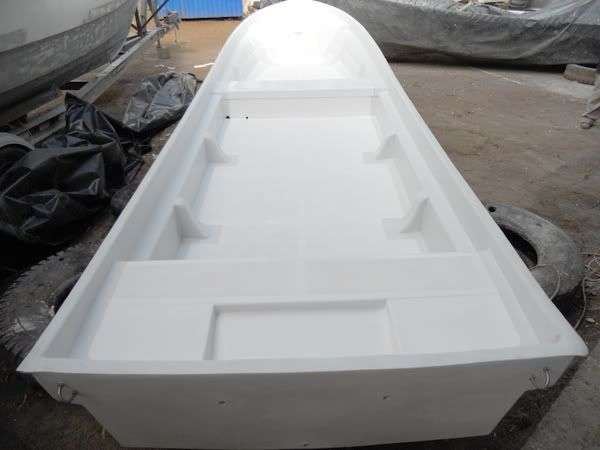
Craig dictated some special features into this custom mold to give the Adventurer a few tricks up her sleeve. The hull consists of 5 horizontal stringers instead of the typical four which yields extra strength against Garza’s waves.
Beneath the floor the entire hull is injected with polyurethane foam which makes the boat naturally buoyant; these ‘full-floatation’ cannot be sunk, even when full of water they bob like a cork.
The floor is a very fine fiberglass diamond pattern that grips bare feet like Velcro. It also cleans easily and doesn’t hold stains from fish blood.
The front casting platform is extended by two feet which creates a 48 inch casting platform on the prow. This is the same dimensions of the Explorer’s casting platform, just on a smaller boat.
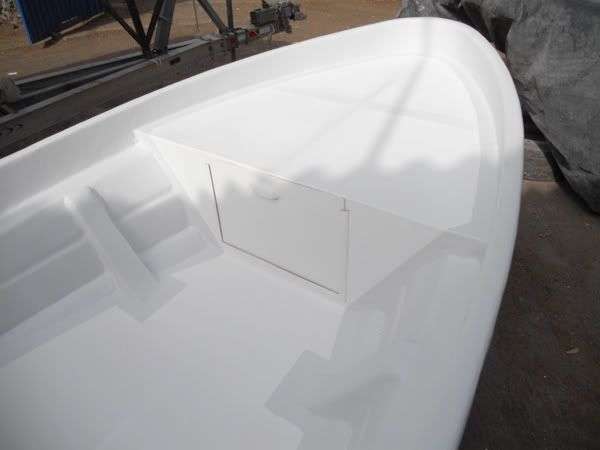
The final custom piece is the 14 inch wide oversized fishbox that runs laterally across the center of the hull. This section is specially designed to house the extra-large fish that lurk in these waters.
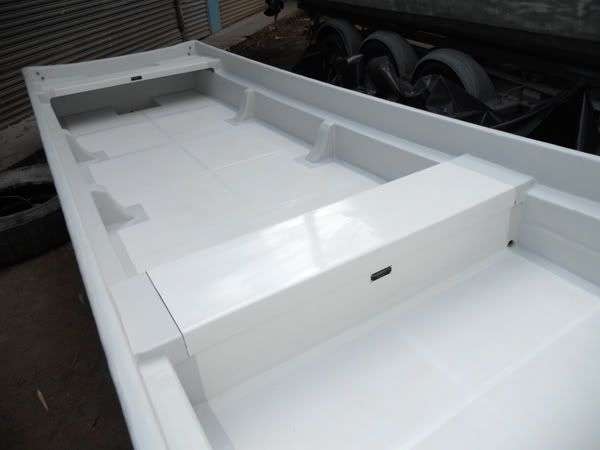
The front nose is a watertight enclosure with a form fitting access hatch. For the bow area it is smart to store light items (life jackets, ropes, bumpers, empty fuel containers, etc). All pangas ride best with the bow high and light.
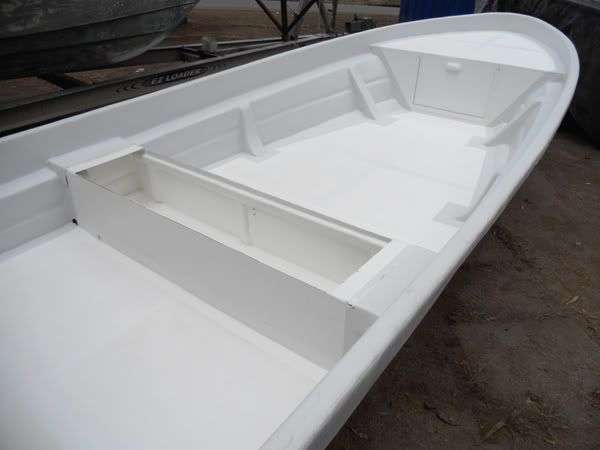
The hull is very strong but super light at about 600 pounds, making weight distribution critical for performance. When rigged properly there is no need for trim tabs and the hull rides like a dream. Also being flat on the back means not much horsepower is required to climb on plane.
Almost every Panga we see in the US is way over powered and consequently too heavy overall and in the transom. This ‘bigger-is-better’ approach is folly; it kills the ride quality, costs more to build, and burns way too much gas.
Meanwhile….
As the hull slowly cured in the mold at NBC Boatworks, several other threads began to come together to make the Adventurer a reality. Jack and Matty made the rounds to all the marine parts distributors in Jacksonville to gather up the necessary components to assemble this boat in Costa Rica.


Large items like the Bimini Top and the gas tanks dominated the shipment, however the small details like stainless steel nuts, bolts, washers, davits, anchor cleats, and rod holders were equally important despite their small size.
After a month of shopping the boys loaded up a double pallet load which Matty delivered to the Port of Miami for export. Using a lot of plastic wrap, ropes, luck, and God’s grace this whole shipment made it to Guiones Beach just in time for assembly
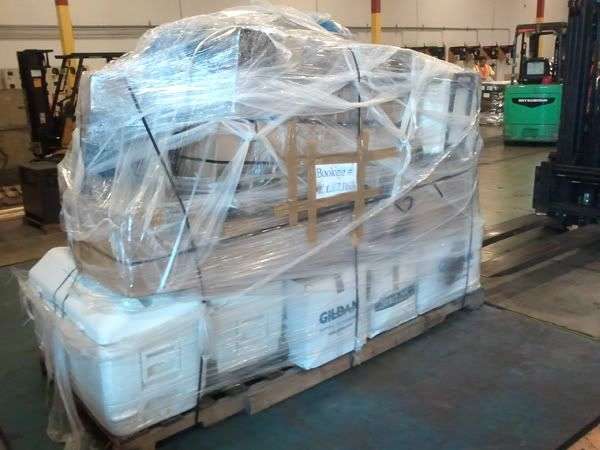
There were shipping obstacles to overcome on the Costa Rica side as well. Due to customs restrictions NBC Boatworks could only deliver the hull as far as the Nicaragua/Costa Rica border. Also they would be taking their trailer back to Nicaragua with them.
Enter the FishingNosara A Team of Cumi, Javier, and Grevan. They loaded up the Land Cruiser with the Explorer’s trailer, met the NBC guys at the border and moved the hull over using pure Tico strength.
The ride back to Guiones through the mountains was racked by gale force winds that almost sent our new hull down the mountainside like a bobsled.
Fortunately the ropes held and the posse got the boat home safe and sound.
The final thread is the most important: Senor Carlos Vallejos has been around FishingNosara since its inception. Called “Pipio” by his friends, Carlos has served as First Mate for the Nice n’ Tight, Sportsman, and Reel Deal and was on the billshot for Craig Sutton’s first Black Marlin.
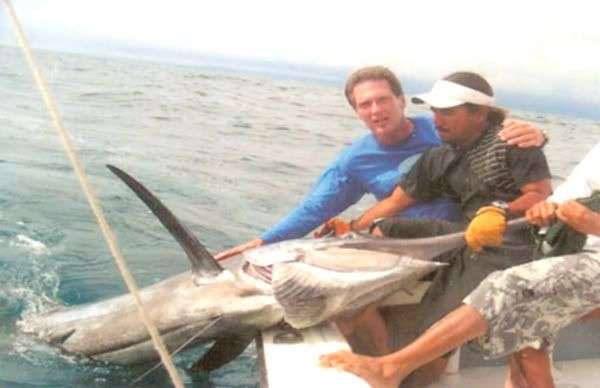
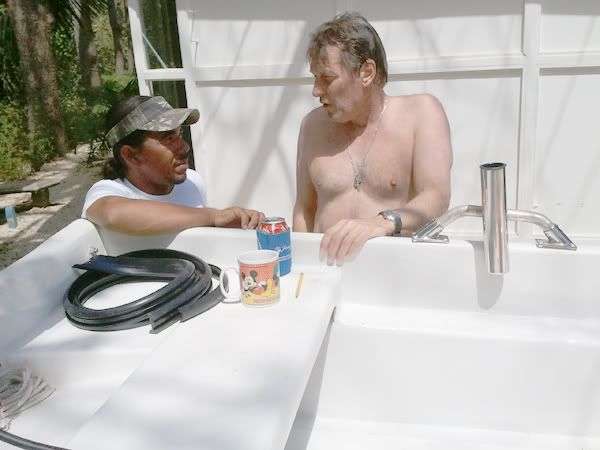
He joined the FishingNosara team to lend a hand to Captain David on the Explorer and immediately the production level of the Super panga went through the roof. More importantly we all got to know Carlos’ good nature and keen fishing instincts first hand.
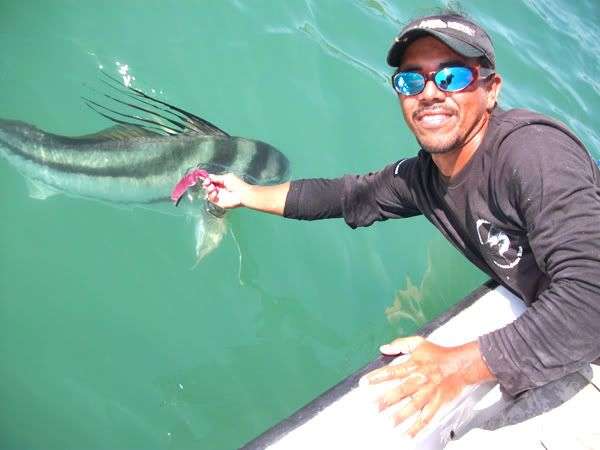
With the hull and the parts in place the only piece left to add was a Captain, and Carlos is Craig’s first choice to helm the Adventurer.
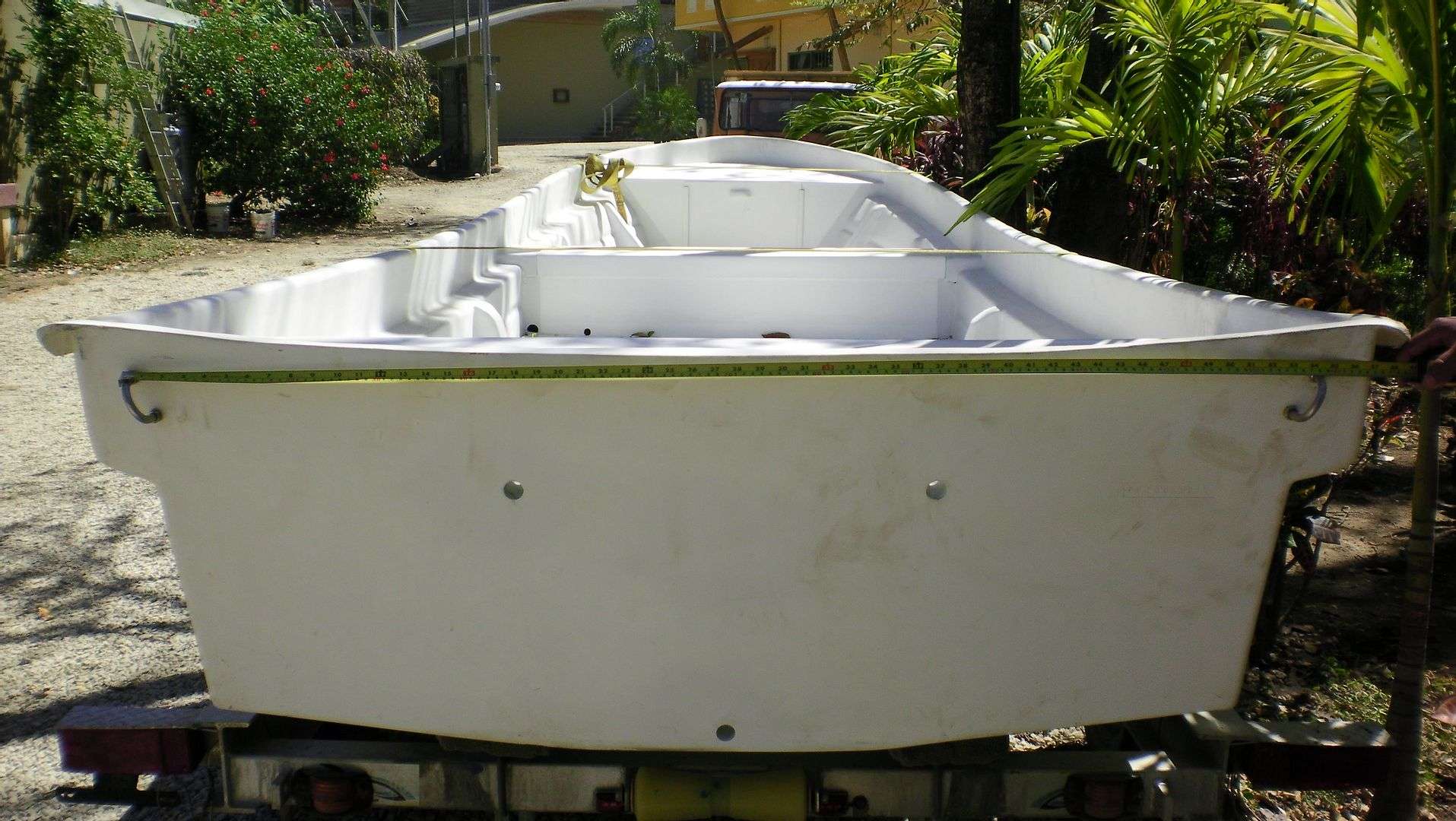
Build Day One – March 27, 2012
Fresh off the plane from Florida, Captain Jack and Matty met with Captain David and Carlos to discuss the project and start installing the accessories on the gunwales. As Jack got to work, the boys had a peek at Captain Jack’s newest tattoo:
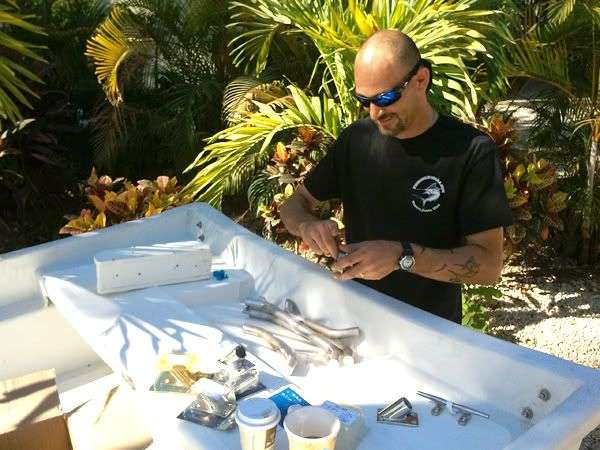
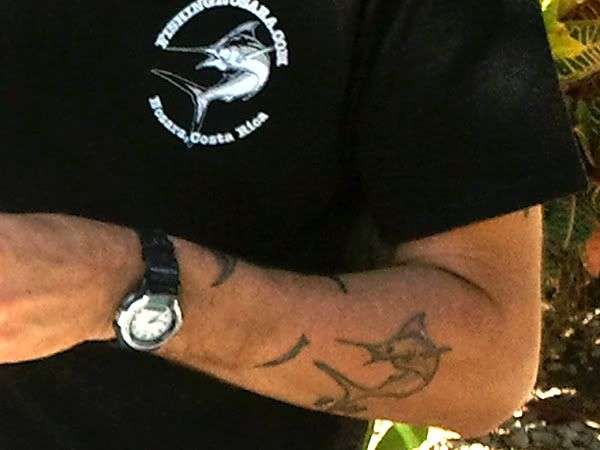
The bent aluminum bar stock and the footers are visible in the picture above. It’s a simple and elegant design that Craig perfected on the Explorer.
We through-bolted the feet directly to the gunwales, therefore avoiding drilling a 3 inch hole for a rod holder into the actual hull. If you drill into the hull the water intrusion can cause problems like fiberglass separation and wood rot; both are massive catastrophes and can be avoided with proper forethought.
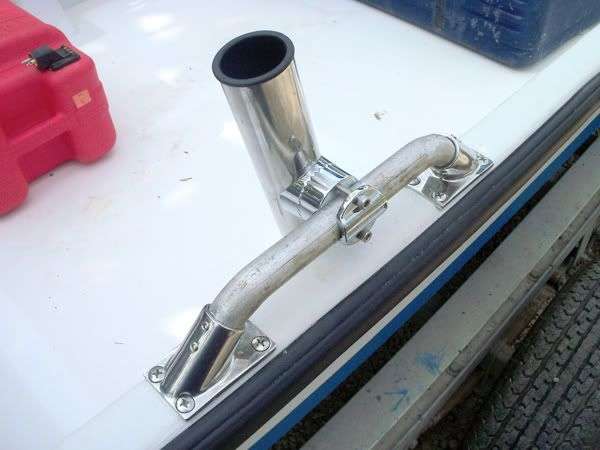
Most pangas are the open gunwale style meaning that the gunwale is rolled over into a lip; this simple design is extremely effective and provides a great surface to secure rod holders and accessories. Just like the rod holders, the rub rail went on with little effort thanks to the rolled lip of the gunwale.
The all-aluminum Bimini top was the most delicate item in the shipment. The slightest bend or twist in the hoop of metal and the top would never fold and unfold properly.
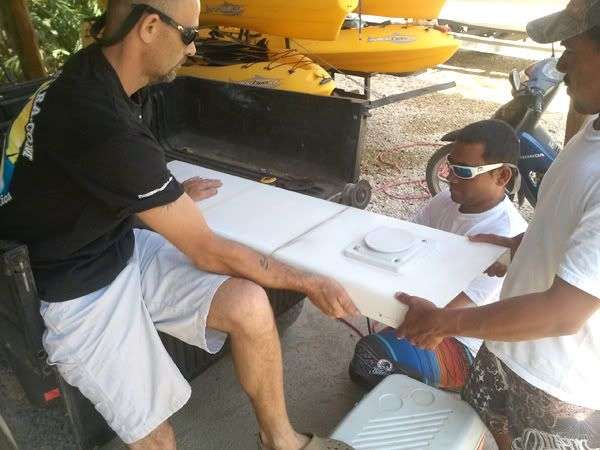
When it lined up to the hull perfectly, the sigh of relief from Matty and Jack could be heard all the way back in Jacksonville. In the future we will probably swap this out for a larger shade, but for now this top will keep our clients out of the sun on long-duration trips.
The plan with this fishbox is to get maximum usability out of minimum space so Craig hit upon the novel concept of using the lid of the fishbox to support the weight of the angler seats.

The lid consists of three horizontal wood stringers encased in fiberglass, so cutting two straight lines through all that material took a hybrid old-school/new-school approach. We utilized an angle grinder to score the line and get as deep as we could, then finished it off with an old fashioned hand saw.
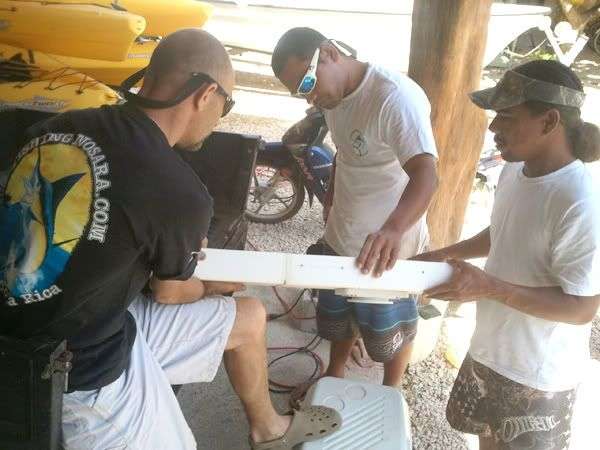
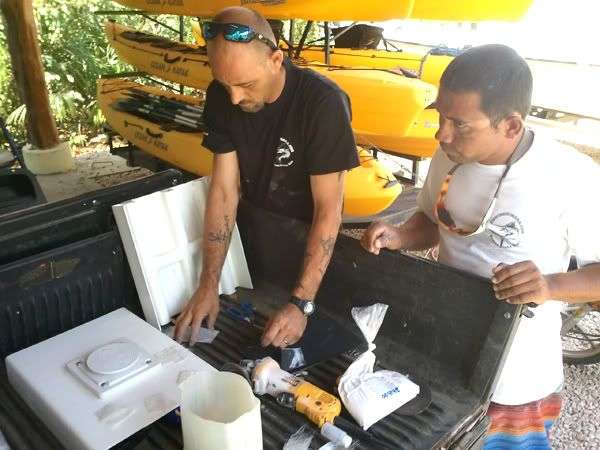
Captain David’s fiberglass mastery is well-documented, so rather than elaborate on it now let’s just say that this little chore was certainly within his scope.
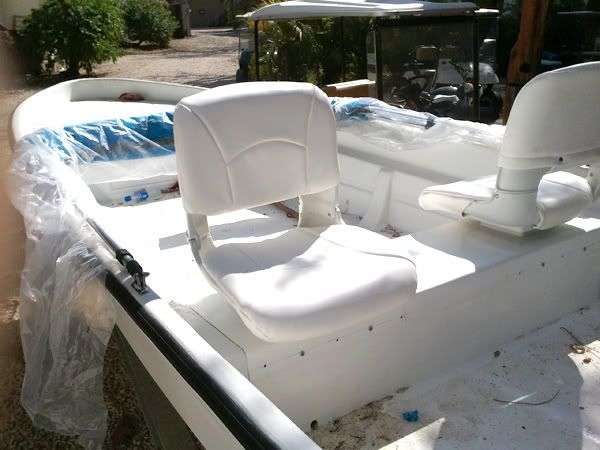

He effortlessly encapsulated the exposed wood stringers in fresh fiberglass to prevent water from swelling into the wood. These small details are the kind that can turn into big problems if ignored.
We’ve heard nothing but good things about Tempress Marine Seats, and once we took delivery of these quick-release highback folding seats we found that all the praise was well-deserved.
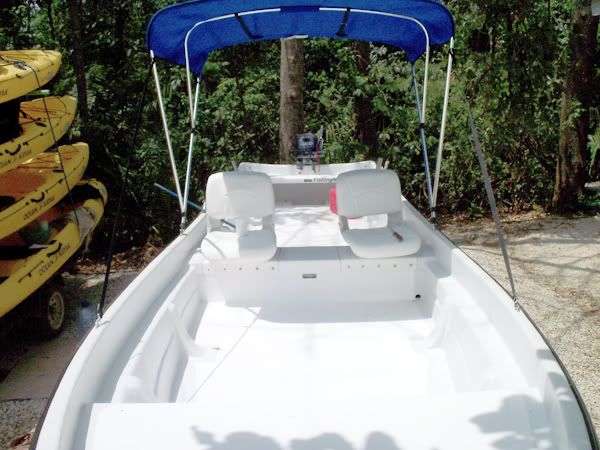
These butt holders feel like they were made by Laz-E-Boy.
The quick release plates are installed on the two outer sections of the fishbox lid. Each section is secured to the fishbox via 10 stainless steel bolts and a liberal amount of 5200 marine sealant.
Taken in totality this system is just as strong as any pedestal-based seat yet comes in at a fraction of the weight, cost, and complexity. Each seat can rotate 360 degrees meaning that the angler can face forward or backward. Also the seats can be quick released and stowed for even more cockpit flexibility.

After the first day of work, the Adventurer was beginning to look more like a boat than a hull.
Build Day Two – March 28, 2012
Yamaha has been very good to us over the years. The pair of Yamaha 150’s on the Wanderer have performed wonderfully and the 75 on the Explorer is absolutely bulletproof.
They go the extra mile (literally and figuratively) by sending out their own expert technicians to our remote location to install the motors and even to perform regular maintenance.
On a serious note, many people don’t realize how deeply Yamaha was affected by last years’ earthquake/tsunami/nuclear meltdown event in Japan. Their entire corporate structure was rocked from the assembly lines to the boardroom and everywhere in between.
Through the production delays and scarce availability of spare parts, Yamaha never compromised on quality. Overcoming seemingly impossible obstacles in a tough environment is a trait with which FishingNosara can identify and is why we respect Yamaha.
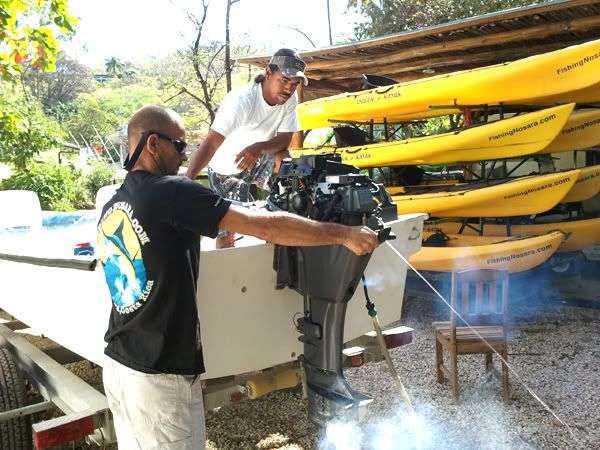
When is came time to get a motor for the Adventurer it was easy to choose the Yamaha 20hp Four Stroke because we already had one on site. Back when we shipped the Wanderer we bought it on a whim, figuring on of the local panga boat drivers would eventually need it.
It seems that we underestimated Marcos’ ability to keep his motor running, because this motor has been sitting in the box in a bodega for over three years. Turns out that this she was waiting for the Adventurer all along.
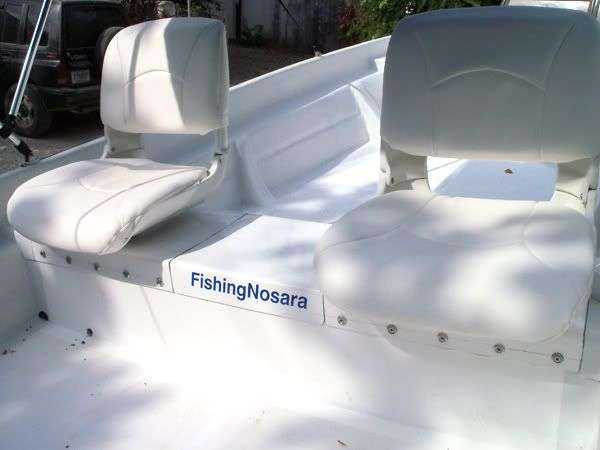
Carlos got hooked up the motor to the transom, and she fired up on the first pull of the ripcord. That’s quality, folks! You try buying any other motor and mothballing it for three years, then see if it fires up immediately.
Backed up by a 3.5 inch propeller, this 20hp pocket rocket has all the juice the Adventurer will ever need to push three anglers through the waves.
Captain David and Carlos are incredible boatman on and off the water; they keep the Explorer looking fresh so they were the perfect pair to paint the Adventurer.
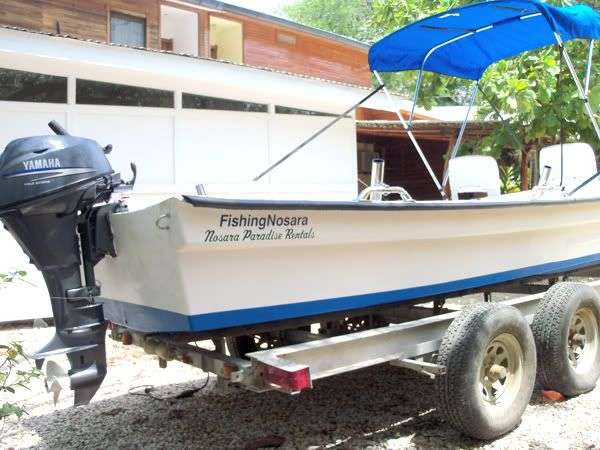
This is the same bottom paint used on the big boats and helps visually tie the fleet together. While Matty and Captain Jack headed out to the flagship Wanderer to install a state-of-the-art alarm system, Carlos and David applied a gorgeous coat of blue bottom paint to the Adventurer.
By using the hull ribs as a guide and running the tape like a hot-rod pinstripper, David achieved razor sharp lines and perfect spacing on both sides of the hull.
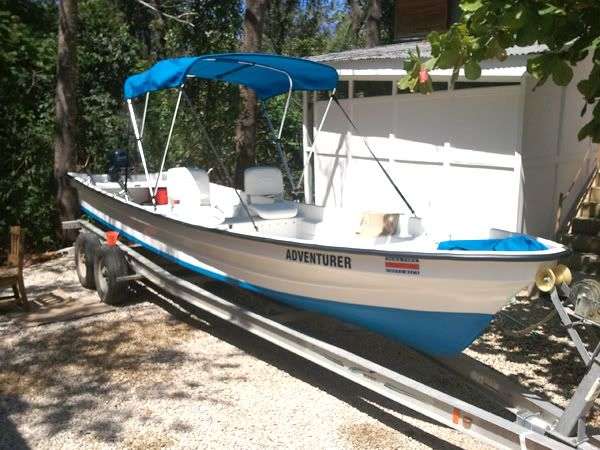
They used a bottle jack from an old truck to lift the hull off the trailer and achieve full paint coverage, then came back for the other side once it was dry. Once again, attention to the smallest details is key: The difference between ‘try’ and ‘triumph’ is that little extra ‘umph’.
The Wanderer and Explorer cast a long shadow when it comes to final fit and finish. If the Adventurer is to fly the same flag as these legendary boats then every minor detail must be perfect.
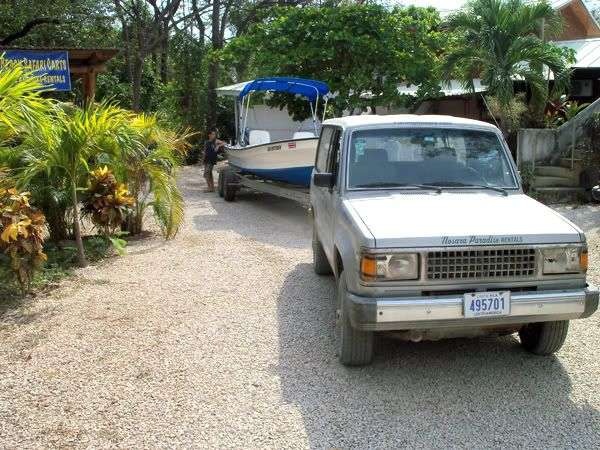
Matty tended to the decals and the finished 5200 beads around the rod holders, while Captain Jack helped get the bimini top perfectly centered and anchored down via stainless steel cleats. Together they re-mounted the motor on a 1 inch pad of 5200 to help fight hull vibration at speed.
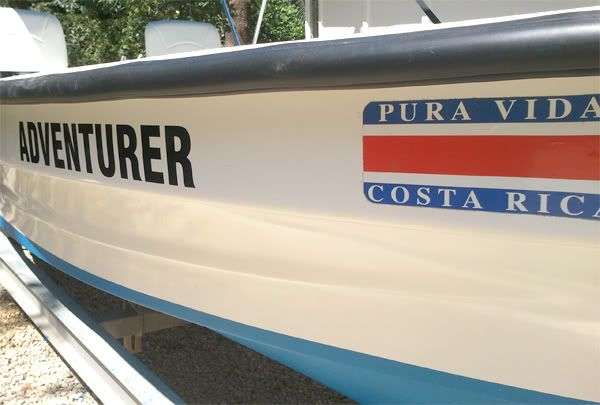
Carlos tore through our tackle shop like a kid in a candy store, loading up on top-water plugs, brightly colored jigs, raw finished cedar plugs, fresh hooks, new line, and of course a matched set of Penn 460 spinning rods with 6’7” rods.
We wanted to get him off to a good start so we also provided a new cooler, a set of filet knives, and a pair of Costa Del Mar Tag sunglasses with the limited-edition silver frames.
Launch Day – April 1, 2012
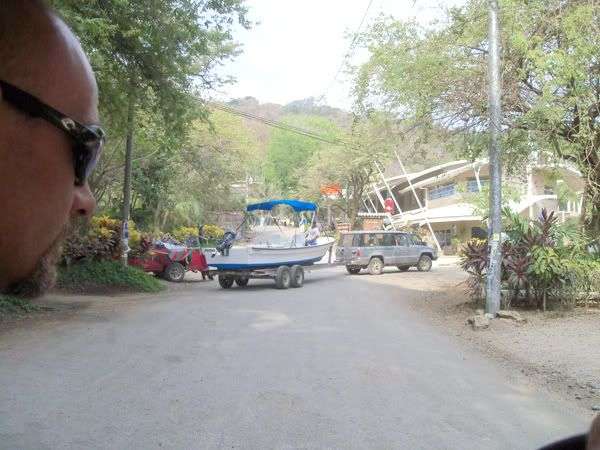
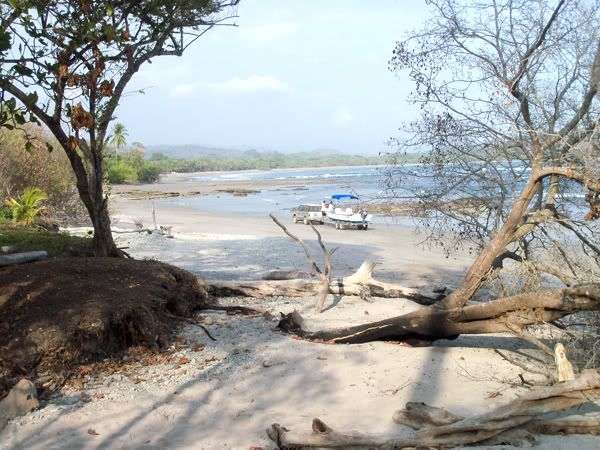
The quiet of a lazy Sunday afternoon in on the road from Guiones Beach to Garza was shattered as Craig Sutton put the pedal to the metal and hauled the newly built Adventurer out for her maiden voyage.
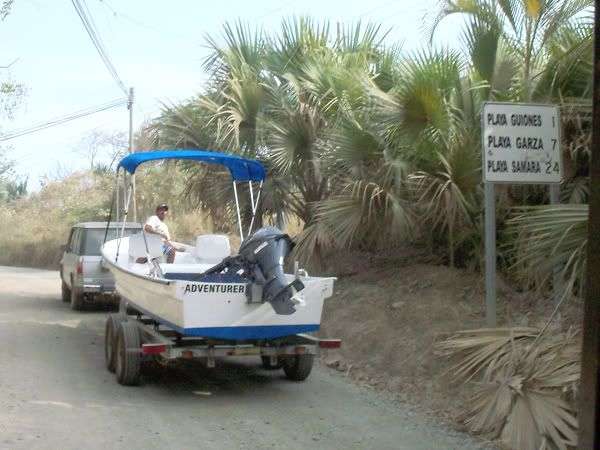
Captain Jack blocked traffic like a pro in the trailing Safari Cart as Captain Carlos enjoyed spot of honor in the boat for the trailer ride.
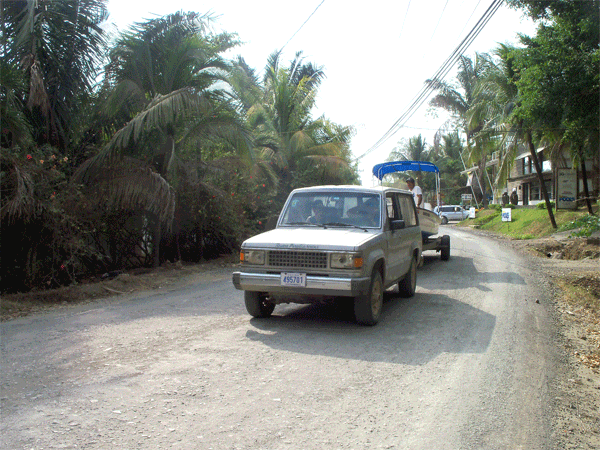
For those who haven’t been to Garza, there is no boat ramp or dock from which to launch and recover boats. The only way to get vessels in and out of the water is by backing the trailer as close as possible to the waterline, detaching the trailer, and pushing the whole load through the sand and surf until the boat floats away freely.
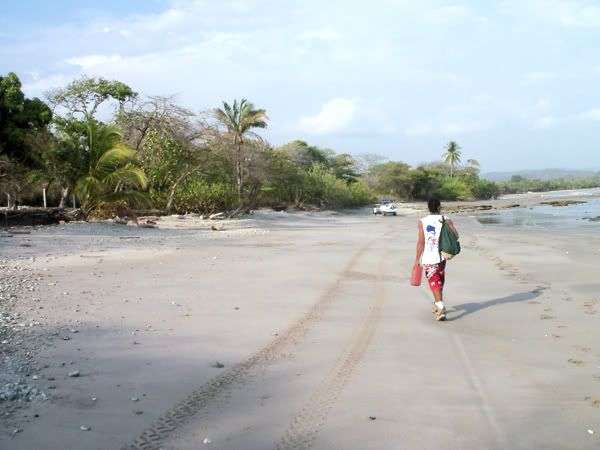
Usually this process required 10 men and a 4 wheel drive truck. Since most of the staff takes Sunday off, for the Adventurer launch we had the following skeleton crew: Matty, Jack, Craig, David, Carlos, First Mate Alex (of the Wanderer), and Kelvin (Nosara Paradise Rentals handyman).
The Ship of Fools Tournament had wrapped up the night before, further complicating matters as the entire community (including the panga boat ferrymen) were sleeping off the weekend’s good time.
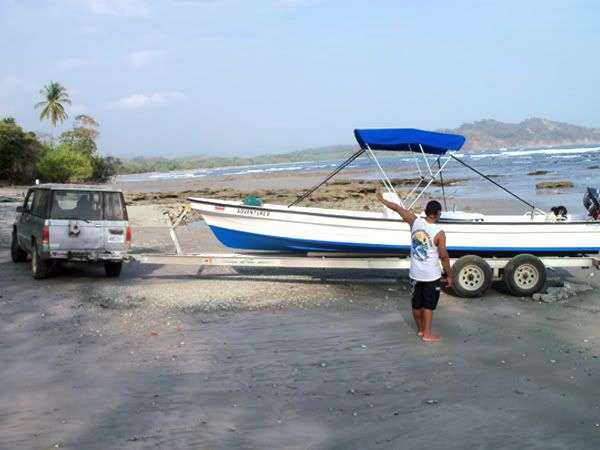
Lastly, the Land Cruiser was out on an airport transfer, so we fell back on the trusty old Trooper to haul the trailer. Undermanned and underpowered, the FishingNosara team dug in for the launch at Playa Garza around 3:30pm for a 4:00pm low tide.
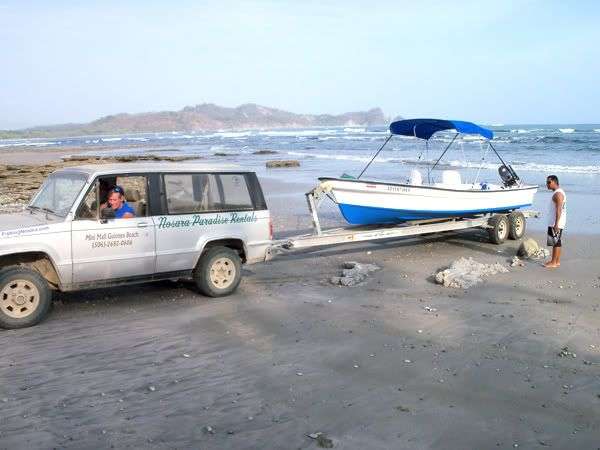

Despite the challenges, we hit the western beach of Garza with confidence; after all, the Adventurer was designed from jump to overcome obstacles and turn skeptics into believers. Craig maneuvered the trailer into position and when the tide was right all hands pushed and swam with their collective might.

Kelvin stayed with the trailer while the other 7 men scurried over the gunwales. Captain Carlos pointed the Adventurer around the rocks and out past the breakers. The Yamaha roared to life and propelled the heavily loaded craft through the waves with surprising might.

Captain Jack, Matty and Alex unloaded on the Wanderer to finish up the alarm system while Craig, David, and Captain Carlos put the Adventurer through her paces.

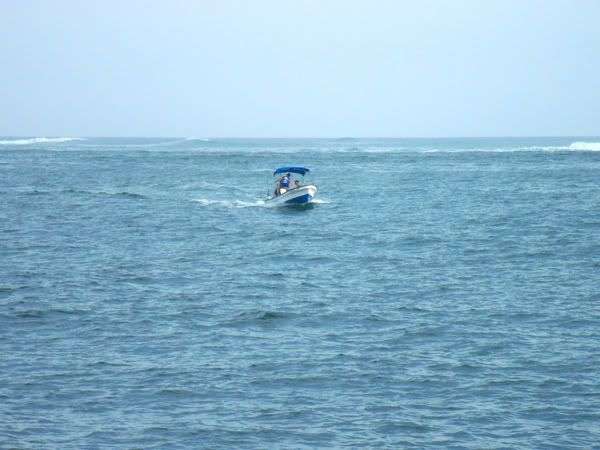
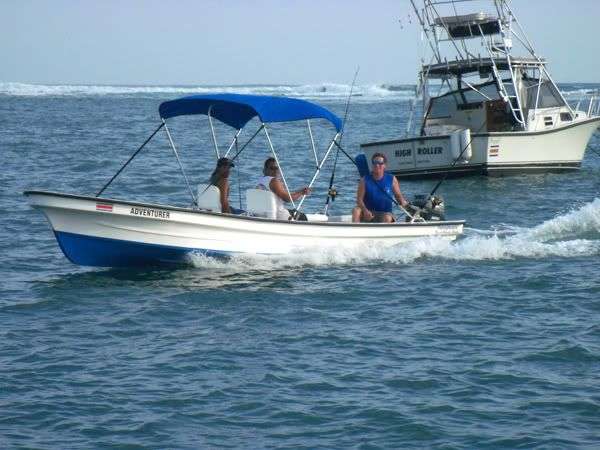
The hull and motor passed the trials and Craig was stoked about the performance of the new pocket-sized pistol Adventurer.
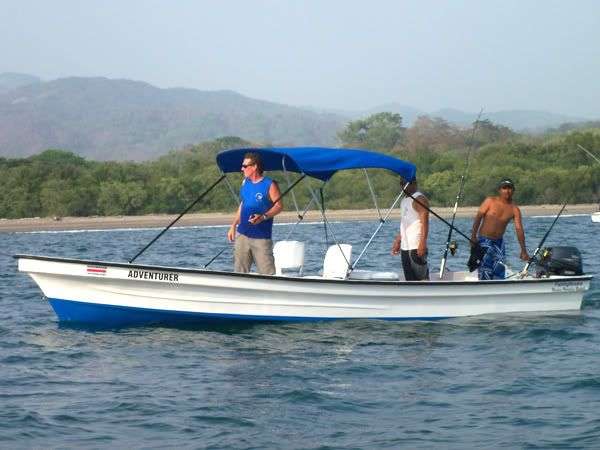
Like all boats there are still some nagging details to finalize (we are missing a couple of davits and the rub rail could be a little tighter for starters) and there will be new obstacles to overcome in the future.
We will be installing a battery powered depth recorder / bottom machine in the next few weeks just as soon as we can settle on the right unit.
Still, the bulk of the Adventurer is in place and functioning like a champ.
First Trip – April 4, 2012
Scott Coggins from Vermont was the first client to test the waters in the Adventurer, and on a 5 hour Half day trip he caught three Bonitos, a small Grouper, and five of the tasty and elusive Congrios. This exemplifies the near-shore bottom fishing that the Adventurer was designed to dominate.
There are already more trips planned for Captain Carlos and we are thrilled to have him on the team.
